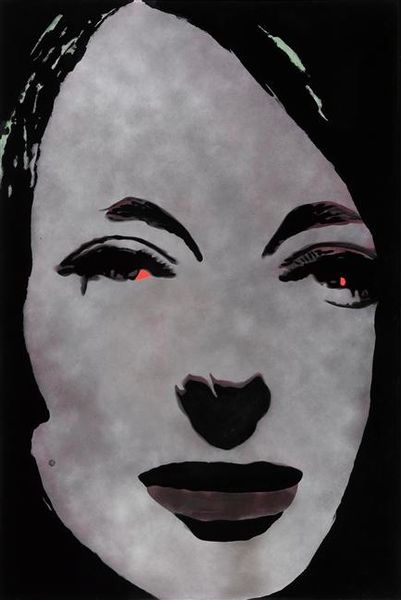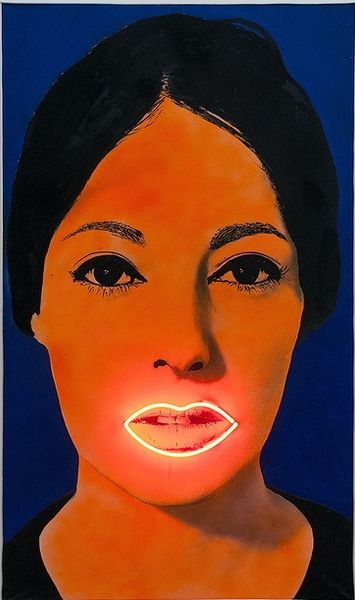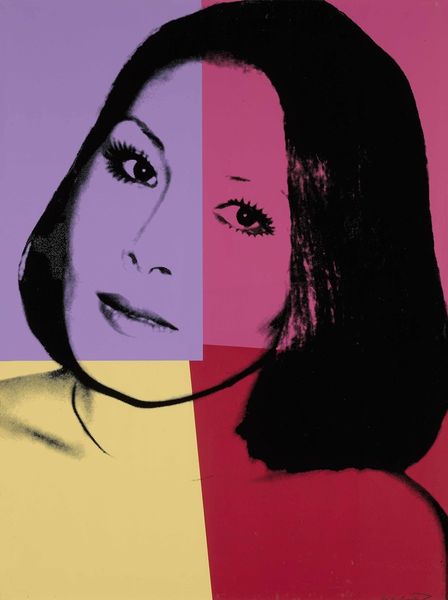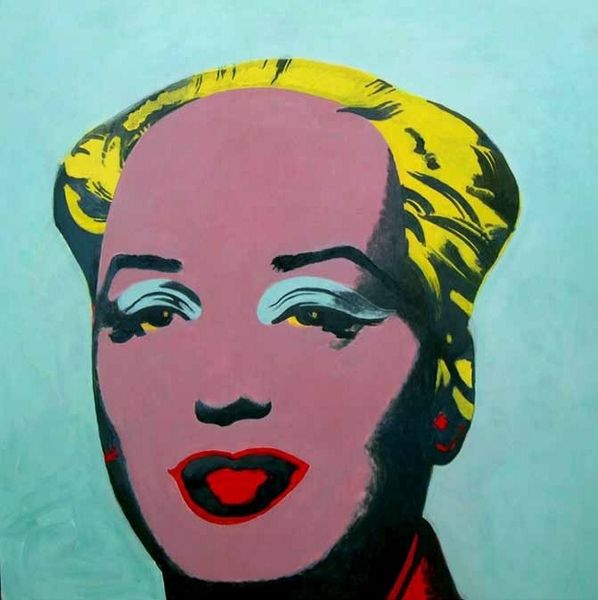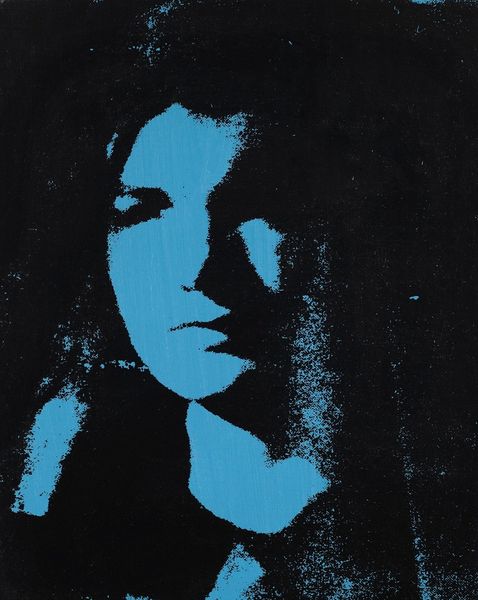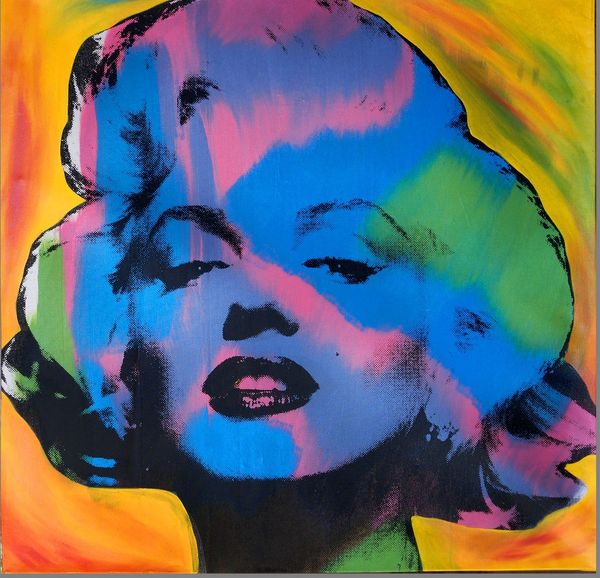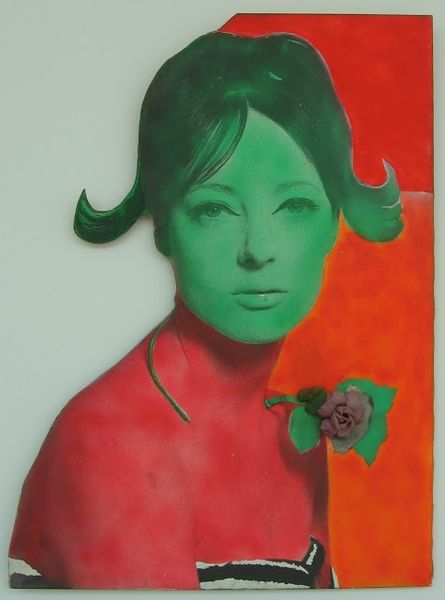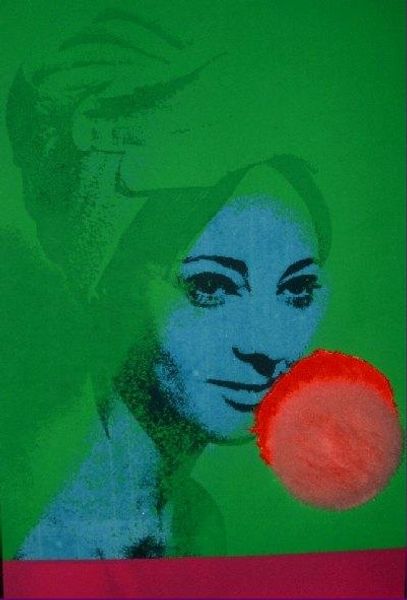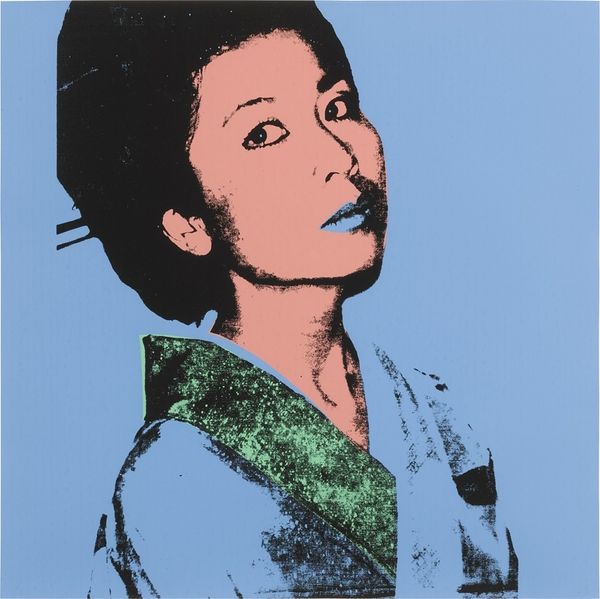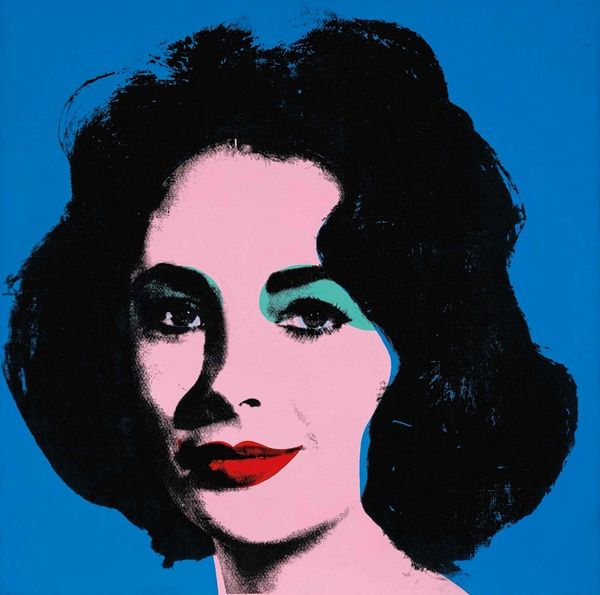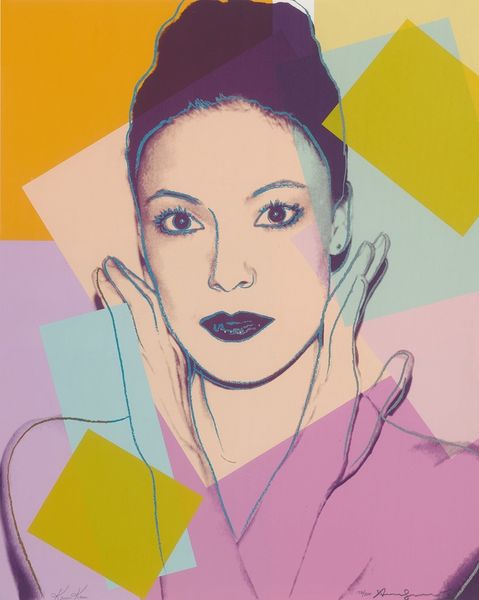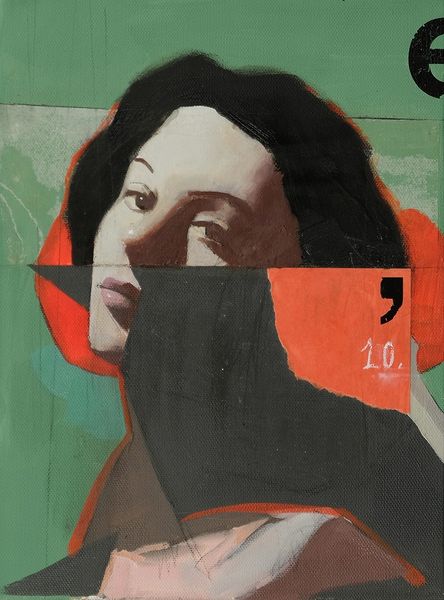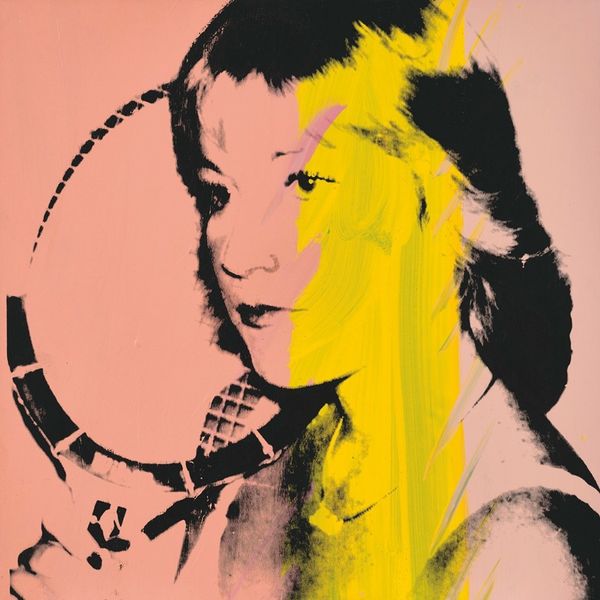
mixed-media, acrylic-paint
#
portrait
#
mixed-media
#
caricature
#
pop art
#
acrylic-paint
#
figuration
#
pop-art
Copyright: Martial Raysse,Fair Use
Curator: Martial Raysse created “Nissa Bella” in 1964, using mixed-media that includes acrylic paint to achieve this startling Pop Art portrait. Editor: Striking. The clashing orange backdrop against the almost sickly green skin tone...it's immediately unsettling, then you spot the neon heart and it adds another layer of almost sarcastic sweetness. Curator: Yes! The heart symbol resonates so strongly; consider the countless depictions throughout art history, from medieval tapestries to contemporary graffiti. Raysse is consciously playing with that visual language. He knows we are primed to respond emotionally to that form. Editor: And using neon—a very modern, commercial medium—shifts that sentimental weight, doesn’t it? It's almost like love sold as a commodity, fitting into that consumerist critique so prevalent in Pop Art. The portrait becomes almost dehumanized under that cool, glowing heart. Curator: Perhaps. Or is he hinting at the enduring power of love, even within a rapidly changing, commercialized world? The neon suggests resilience, an almost defiant optimism persisting despite the artifice of modern life. The bright electric light becomes an undeniable emblem, pasted directly onto the image. Editor: That resilience feels a little fraught given the social context of 1964. Considering second-wave feminism’s emergence and the political turbulence around race and civil rights... That “beauty,” framed by the coolly detached heart, feels less like hope and more like a hollow promise. Curator: It’s a fascinating tension. It feels both of its time and speaks to a timeless yearning, like an early Byzantine icon but rendered in the visual language of advertising. A halo reframed for the modern era? Editor: Maybe. I still see it as a pointed commentary. But it certainly gives us a lot to unpack regarding beauty standards, commodification, and the complex emotional landscape of the 1960s. Curator: Exactly. Raysse invites us to re-evaluate those persistent symbols—hearts, beauty—in our own contexts. Editor: Well, it definitely sparked some lively debate! Hopefully, visitors find something to engage with on their own terms.
Comments
No comments
Be the first to comment and join the conversation on the ultimate creative platform.
